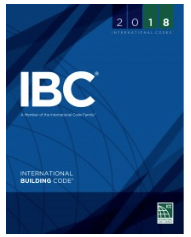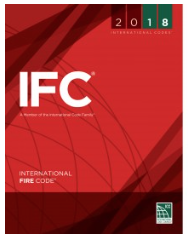

Enforcing Code Compliance
Adoption of the latest Building and Fire Codes is only part of the safety solution. Codes must also be effectively and uniformly enforced to ensure that buildings and their occupants benefit from advances in technological provisions in the codes. When hazardous materials are involved, this process begins with a Hazardous Material Opinion and Report, performed by a qualified firm or person approved by the Building Official, which identifies the hazards and the applicable codes and appropriate methods of protection. Enforcement of the codes falls to the Authority Having Jurisdiction (AHJ). Only the AHJ has the ability to “approve” a design and installation. They do so by looking at the “prescriptive” language included in the codes and when the prescriptive language is silent, a “performance-based” solution is required to accomplish the intent of the codes.
Primarily, hazardous materials code compliance falls into two areas of responsibility. First are the Building Inspectors – local government Building Officials who review design plans; inspect construction work and issue building and occupancy permits. Once the building is completed and occupied, Fire Inspectors visit each building annually to verify that required Life Safety systems – including Hazardous Material Emergency Alarm Systems – are maintained according to the provisions of the original Building Permit(s) and Certificate(s) of Occupancy.

Ino-Tek and the Inspection Community
Ino-Tek maintains strong working relationships with Code Officials around the country. When hazardous materials are involved, our Proactive Compliance approach and code expertise helps ensure your project is approved on schedule. Our educational outreach programs and code development involvement affords us the opportunity to develop trusted relationships with local code–enforcing authorities. Community inspectors across the country trust Ino-Tek designs, installation, and service when dealing with hazardous materials.
Additionally, Ino-Tek’s unique understanding of Hazardous Material Emergency Alarms systems and the portions of the building and fire codes dealing with hazardous materials have helped owners implement cost-effective safety solutions that drastically reduce construction costs by applying creative solutions to building classification issues. In some cases, Ino-Tek has worked directly with the AHJ to develop and propose “equivalencies” required when requesting “alternative installations or modifications” where certain requirements might be impractical or when new processes, technologies or materials have not yet been recognized by the codes.
While hazardous materials code compliance is very important, our design, installation and service expertise may lower your maintenance and utility costs by reducing the required heated and cooled makeup air by operating ventilation systems intermittently. The Ino-Tek approach to use the required Life Safety / Hazardous Material Emergency Alarm System to reduce your carbon footprint is unique in the safety industry.

Ino-Tek and the End-User
Since 1996, Ino-Tek has been part of the conversation about Hazardous Materials, the requirements of the Building and Fire Codes and cost-effective implementation for the owner. Our years of association and consultation with national, state and local building and fire code organizations, plus our professional staff’s knowledge of the code change process, gives us the background and experience to recommend effective code-compliant solutions. Our Proactive Compliance approach prevents approval issues that might cause design changes, add costs and delay building occupancy.
Our primary goal is to “Keep Your People Safe”. We do this by deploying proven and tested engineering practices in the most cost-effective means possible. For over 25 years, we have built a reputation for Life Safety / Hazardous Material Emergency Alarm System design, installation and service combined with integrity and customer service – earning the loyalty of virtually all auto manufacturers and their suppliers, universities, hospitals and even the United States Environmental Protection Agency.
Hazardous Material Opinion and Report
Our Senior Code Specialist for Hazardous Materials can assess if new construction or the addition of new materials will still meet the level of safety the codes and standards require.
